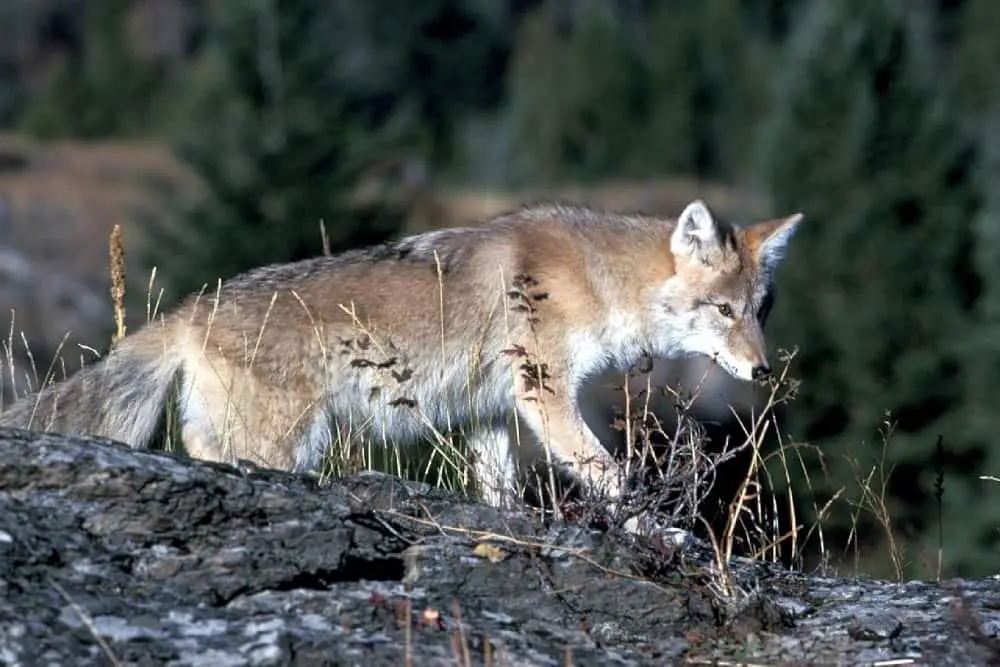
The highly intelligent, scrappy Coyote lives by the ethos “Adapt or Die.” These amazing little creatures have proven exceptionally adaptable in the places they choose to live and sleep and, as such, have thrived in a time when many species are endangered and threatened with extinction.
Coyotes live in open plains, prairies, deserts, forests, woodlands, coastlines, and even cities. Coyotes can be found in Mexico, Canada, the USA, and Central America. Coyotes sleep outside in semi-protected shelters unless caring for pups. When caring for puppies, Coyotes live and sleep in dens.
Unlike the unlucky Wile E. Coyote of the Looney Tunes, Coyotes have shown remarkable resilience to changing landscapes and hostile environments. Where other animals have been driven out and forced into a fight for survival; Coyotes have moved in and not only survived but thrived in wildly diverse geographic locations and environments.
Table of Contents
- Wild Coyote Habitats
- Coyote Subspecies Live in Different Geographical Areas
- Where Do Coyotes Sleep in the Wild?
- Do Puppies Change Where Coyotes Live and Sleep?
- The Urban Migration of Coyotes
- Habitat Selection of Urban Coyotes
- Territory Size of Urban Coyotes
- The Sleeping Arrangements of City Living Coyotes
- Conclusion
Wild Coyote Habitats
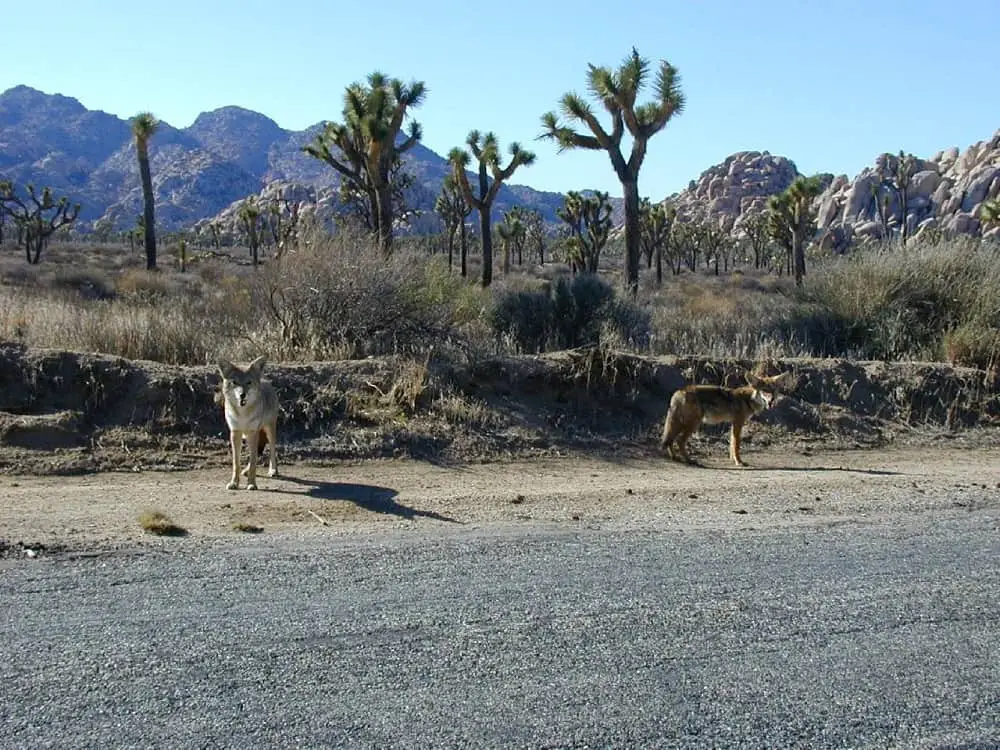
Wild Coyotes prefer open or lightly wooded areas and are frequent occupants in grasslands (i.e., prairies and open plains) and deserts.
However, Coyotes have proven to be versatile and highly adaptable hunters. Thus, Coyotes have successfully extended their territories into forests, woodlands, and coastlines.
Coyotes living in mountainous regions tend to be slightly bigger, with heavier frames than the traditional desert-dwelling coyotes, characterized by their slim builds and ropey musculature.
(Source: Nature Works; Brittanica)
Coyote Subspecies Live in Different Geographical Areas
When asked to picture a Coyote, most people conjure up a picture of a lean, rangy dog-like animal skittering furtively along the desert plains in search of a meal. Although the Coyote’s original habitat was the wide-open plains of the desert, this is no longer the only place Coyotes live.
Today the nineteen Coyote subspecies can be found throughout Central America, Mexico, the United States of America, and Canada.
(Source: Live Science; Desert Museum)
Where Do Coyotes Sleep in the Wild?
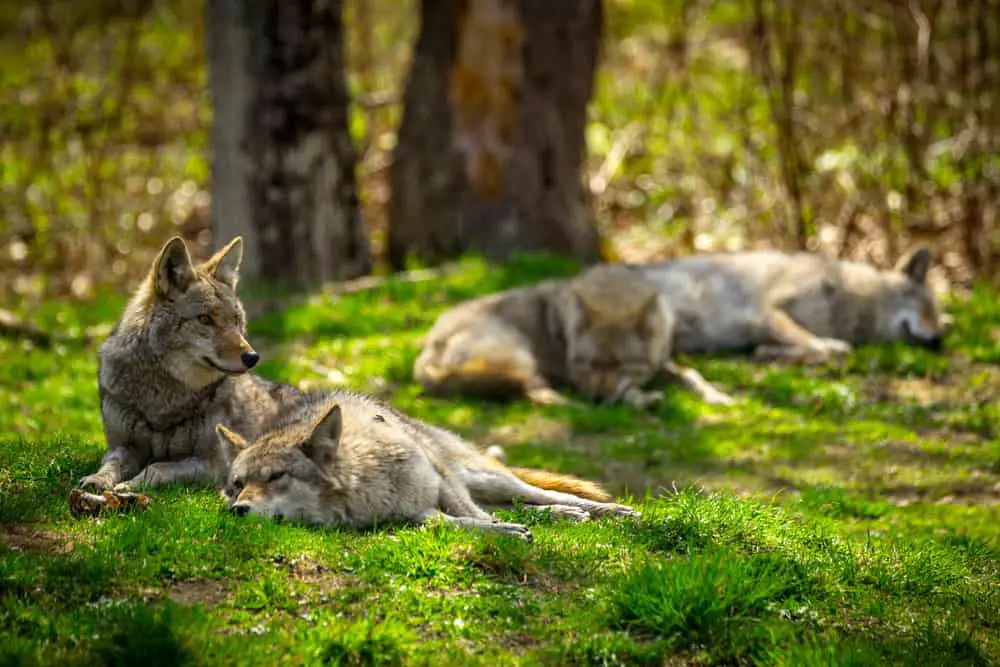
Coyotes are primarily nocturnal but may show diurnal behavior in which they are active for a small portion of the day. However, regardless of whether the Coyote is exclusively nocturnal or exhibits diurnal behaviors, they will spend most of their day sleeping.
Coyotes are happy to make their beds wherever a convenient spot presents itself. They will happily settle down for their daily sleep in hollowed-out logs, under rocky overhangs, or in premade burrows.
Coyotes are notorious squatters and will often fall asleep in burrows made by other animals, particularly medium-sized carnivores like raccoons, badgers, skunks, and foxes. They prefer holes that provide adequate shelter from the elements while still being big enough to allow a speedy exit if necessary.
Coyote packs without pups tend to roam their territories, sleeping in a different place each night. The active roaming of Coyote packs allows them to defend their territories and find the best hunting grounds to feed the entire group.
(Source: Urban Coyote Research; Brittanica)
Do Puppies Change Where Coyotes Live and Sleep?
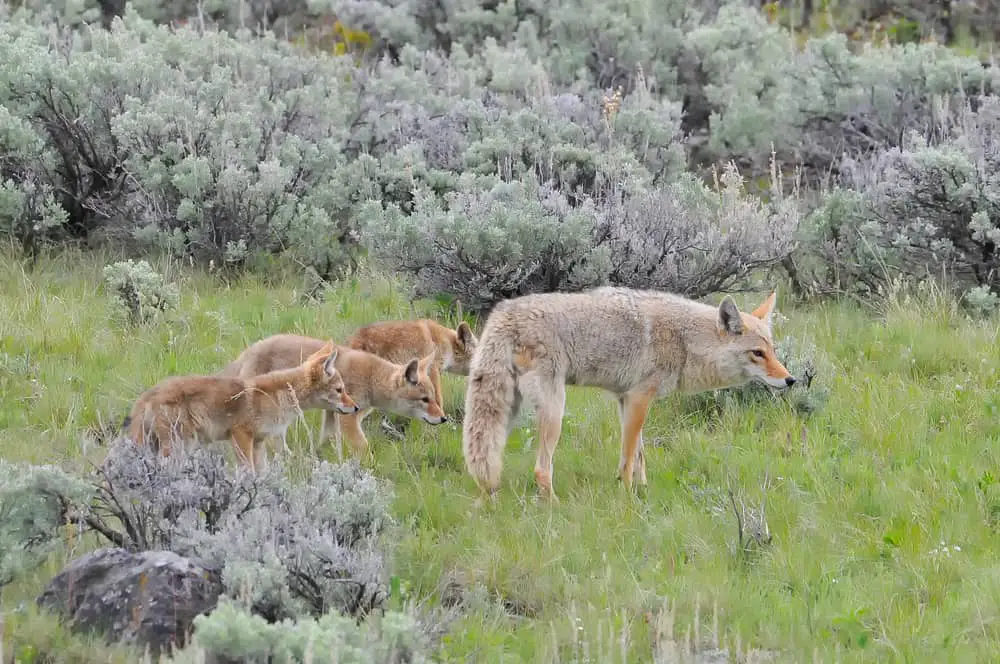
Having a family will always result in changes to parental behavior and sleeping habits; just ask your parents!
Females with pups may choose to dig a den or assume ownership of a burrow made by another animal. The entire pack is responsible for caring for the litter of puppies and defending the den site.
The pack will live and sleep in the den while the puppies are still young. The alpha female (the only breeding female in a pack) may choose to move her pups from den to den if she feels threatened.
(Source: Urban Coyote Management; Brittanica)
The Urban Migration of Coyotes
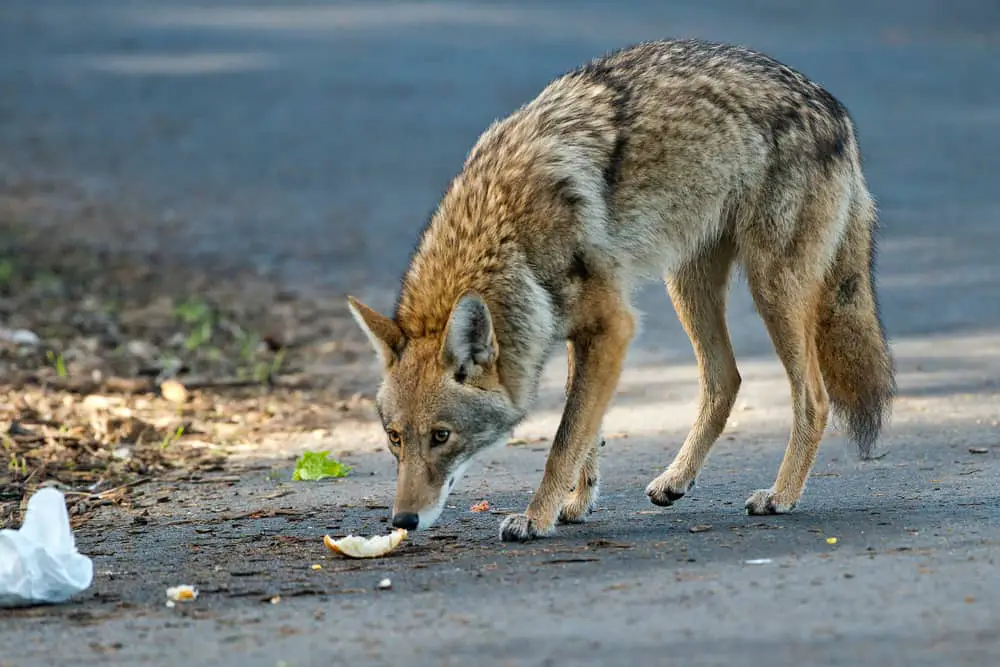
Like most wildlife, Coyotes were initially driven out of newly built cities and largely disappeared from human establishments during the 19th and early 20th centuries. However, over time Coyote populations began migrating eastward and moving into small towns and eventually large cities like Los Angeles and Chicago.
Humans played a pivotal role in the expansion of Coyote territory. Coyotes prefer living in wide-open spaces, which coincidentally is the landscape of human activity. As humans cleared land for agricultural and building purposes, they provided the perfect opportunity for wild living Coyotes to cohabit human settlements.
Additionally, humans began to indirectly and directly wipe out the natural predators of Coyotes, i.e., Golden eagles, wolves, and bears. The removal of these limiting factors facilitated a population explosion amongst the Coyotes with subsequent expansion and migration of Coyote packs.
(Source: Live Science)
Habitat Selection of Urban Coyotes
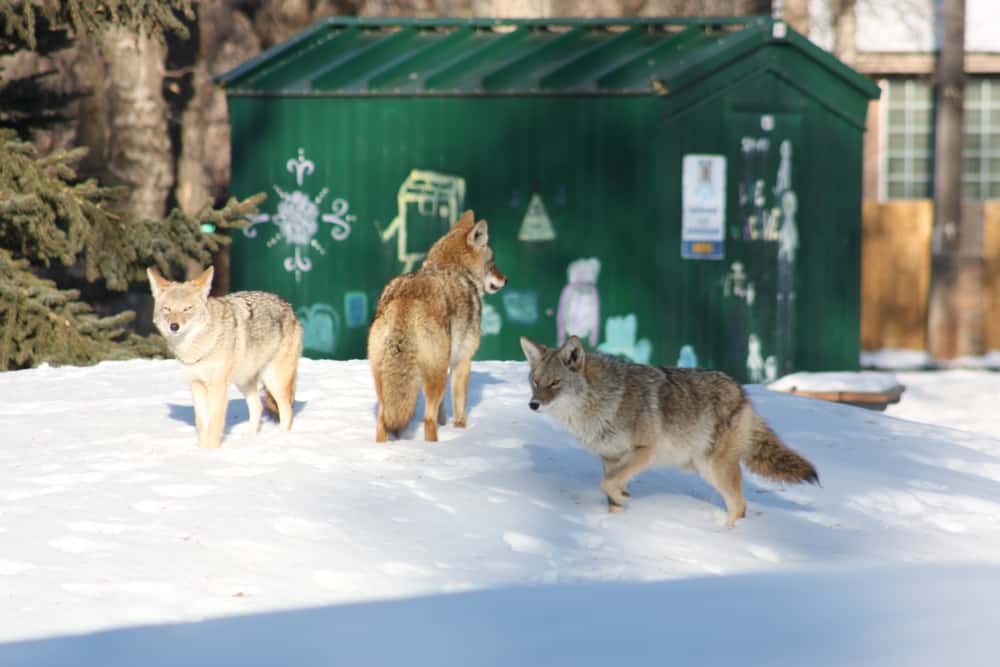
Up until the early 2000s, the habitats and behaviors of city-dwelling Coyotes was an urban mystery:
- Where did they live?
- How did they select their habitat?
- Did urban Coyotes exhibit similar territorial and social behavior as wild-living Coyotes?
The Urban Coyote Research Project conducted a 6-year study to answer these critical questions and, in doing so, reveal where urbanized Coyotes live and sleep.
Researchers discovered that Coyotes tend to avoid built-up areas, e.g., busy residential and industrial areas. Instead, Coyotes made their homes in the small slices of nature hidden in the metropolitan areas.
Coyotes picked fragmented islands of open nature contained within the city bounds. Golf courses, extensive gardens, and parks are popular choices for Coyote packs.
(Source: Urban Coyote Management)
Territory Size of Urban Coyotes
Wild living Coyotes have large territories (10 to 40 square kilometers, i.e., 4 to 15 square miles), which they vigorously defend. Like wild-living Coyotes, urban Coyotes also have territories and home ranges, but these are much smaller than their wild counterparts.
Urban Coyote packs will usually defend a territory of approximately 8 square kilometers (3 square miles), although they often adventure beyond their pack’s land in their nightly searches for food.
Loner Coyotes have large home ranges, which may be 64 square kilometers (25 square miles) or even more; however they do not actively defend their home ranges from interlopers.
Pack territories never overlap with other pack territories, unlike the home ranges of loner Coyotes may overlap with pack territories and home ranges of other loner Coyotes.
(Source: Urban Coyote Management; Urban Coyote Research; Britannica)
The Sleeping Arrangements of City Living Coyotes
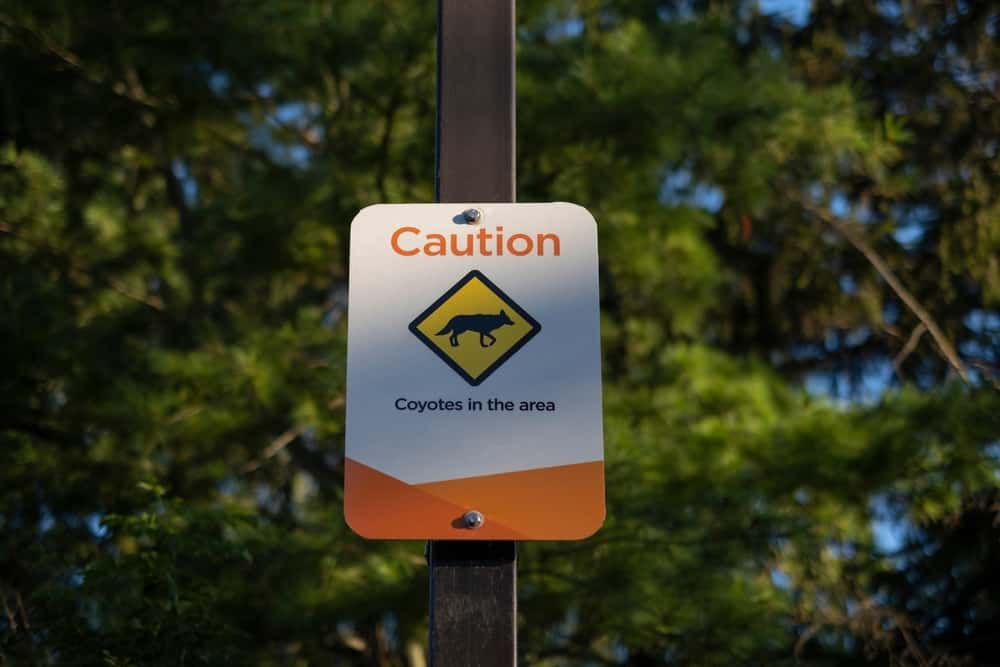
Coyotes rarely sleep in dens unless raising pups.
Coyotes living in cities are almost exclusively nocturnal and, as such, will spend the majority of their day sleeping. These Coyotes know that their best bet for survival is to remain hidden and virtually invisible hence their nickname “Ghosts of the City.”
During the day, they will find a low-hanging bush or shrub, hollowed-out log, or hole in the ground to curl in and sleep the day away.
(Source: Live Science; Urban Coyote Research)
Conclusion
Coyotes living in the wild occupy woodlands, deserts, prairies, and coastlines. The nineteen different Coyote subspecies are found in most of America, including Central America, the USA, Canada, and Mexico.
The urbanization of rural lands has resulted in a thriving urban Coyote population.
Both urban and wild Coyotes prefer to sleep during the day in natural enclosures like old logs, low-growing bushes, rocky overhangs, and burrows made by other animals.
Packs caring for the Alpha’s litter of pups will live and sleep near or even in the den, chosen by the Alpha female.
Sources:
Live Science: Coyotes
Desert Museum: Coyotes
Urban Coyote research: General Information About Coyotes
Urban Coyote research: Urban Coyote Management
Britannica: Coyotes



